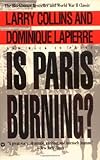Já estive nesse programa: a vida em Paris se divide em: croissant pela manhã, vinho no almoço, aulas uma ou duas vezes por semana, museus quando quiser, uma boa baguete com queijo pelas noites, viagens tranquilas...
Paulo Roberto de Almeida
Mesdames, Messieurs,
En vous souhaitant une bonne réception.
Service communication
Appel à candidatures pour les chaires de professeurs invités de
l’Institut des Hautes Études de l’Amérique latine (Université Sorbonne Nouvelle – Paris 3)
Année universitaire 2019-2020
Appel à candidature pour l'année 2019-2020 : SESSION OUVERTE JUSQU’AU 15 NOVEMBRE 2018
Conditions d’accès
■ Le candidat doit être âgé de moins de 65 ans lors de sa prise de fonction à l’IHEAL, être titulaire d’un doctorat depuis 5 ans au minimum ; être enseignant en poste dans une université ou être chercheur titulaire d'un organisme de recherche étranger au moment de la candidature.
■ Les invitations sont valables pour des séjours longs d’un semestre (4 mois entre septembre et décembre 2019 pour le premier semestre; entre janvier et avril 2020 pour le second semestre). Cela permet une véritable insertion des professeurs invités dans les activités d’enseignement et de recherche de l’Université.
■ Il est demandé aux bénéficiaires de la chaire de dispenser deux enseignements par semestre. Pour chacun de ces enseignements, la charge horaire totale est de 24 heures. Les cours correspondent aux thèmes de recherche et de compétences du professeur invité. Toutefois, les enseignements proposés peuvent subir des modifications en fonctions des besoins de l’IHEAL. Les cours des professeurs invités peuvent être dispensés en français, en espagnol ou en anglais.
■ L’IHEAL reçoit des candidatures dans les disciplines suivantes : histoire, géographie, anthropologie, sociologie, économie et science politique. Pour l'année universitaire 2019-2020, la commission de recrutement portera une attention particulière - mais non exclusive – aux propositions de cours relevant de la géographie et de l’anthropologie, ainsi qu’à celles portant sur l’Amérique centrale, les Caraïbes et les pays andins. Les enseignants seront susceptibles de dispenser des cours dans le nouveau Master LAGLOBE (Latin America and Europe in a Global World) de l’IHEAL, qui bénéficie d’un soutien de l’Union Européenne.
■ Les enseignants et chercheurs bénéficiant d’une chaire pourront réaliser des activités dans d’autres composantes de l’Université Sorbonne Nouvelle – Paris 3, ainsi que dans d’autres institutions universitaires françaises ou européennes avec lesquelles l’IHEAL entretient des collaborations.
■ A partir de la rentrée de l’année 2019-2020, dans le cadre du projet du Campus Condorcet, l’IHEAL intègre les locaux de la Cité des humanités et des sciences sociales situés au nord de Paris. L’ensemble des cours seront dispensés dans le nouveau campus.
Dossier de candidature
Les candidatures se feront directement en ligne. Les candidats devront :
1/ Remplir le formulaire en ligne disponible à l’adresse suivante : formulaire de candidature
2/ Envoyer, par e-mail uniquement, les documents suivants (en format Word, PDF ou image scannée) à l’adresse iheal-chaires@sorbonne-nouvelle.fr. Veuillez noter que seuls les documents demandés seront pris en compte.
■ Une lettre de motivation.
■ Un certificat de rattachement en tant qu’employé d’une université ou centre de recherche correspondant à l’année 2018.
■ Un curriculum vitae synthétique (6 pages maximum) comportant l’information personnelle de base ; la formation universitaire (en excluant les séminaires ou les formations de moins d’un an) ; l’expérience professionnelle, les activités d’enseignement et de recherche ; les activités administratives et de valorisation de la recherche le cas échéant ; la participation à des colloques de portée nationale ou internationale ; et la liste des publications, classée par ouvrages, articles dans des revues à comité de lecture, nationales ou internationales, rapports de recherche, actes de colloques et compte-rendu d’ouvrages dans des revues à comité de lecture. Toutes les informations du CV doivent être présentées par ordre chronologique en partant des dates les plus récentes vers les plus anciennes.
■ Deux lettres de recommandation avec tampon et signature.
■ Une copie du diplôme de doctorat.
■ Trois propositions de cours en vue d’un séjour d’un semestre, sous forme d’un résumé (abstract) de deux pages maximum par cours comprenant les thèmes et les objectifs visés, ainsi qu’une bibliographie sommaire. Merci d’indiquer la langue dans laquelle sera dispensé chaque cours.
■ Une copie du passeport en cours de validité.
Le dossier complet (formulaire + email avec pièces jointes) devra nous parvenir au plus tard le 15 NOVEMBRE 2018 avant minuit(heure française).
Un email de confirmation vous sera adressé dans les jours suivant la réception du dossier. Les dossiers incomplets ou parvenus au-delà de ce délai ne pourront être examinés par la commission de recrutement de l’Université. Nous ne recevrons aucun dossier sous forme papier. Seules les pièces transmises par e-mail seront prises en compte. Tous les dossiers feront l'objet d'une double évaluation dont l'une réalisée par un chercheur ou un enseignant-chercheur extérieur à l'IHEAL.
Pour tout renseignement complémentaire, s’adresser à :
Manuel Rodríguez Barriga (Responsable administratif des Chaires)






